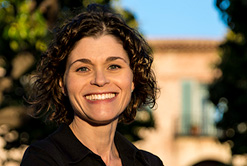Over the years, the NRMP has published data regarding the impact of length of rank order list (ROL) on success in the Match. I first noticed information on this topic in a document called the Impact of Length of Rank Order List on Main Residency Match Outcomes: 2002-2016. There, the NRMP reported that matched applicants consistently had longer ROLs than unmatched applicants. More recently, this information has been validated in the NRMP’s Impact of Length of Rank Order List on Match Results: 2004-2023 Main Residency Match.
Since the latter document assesses two decades of Matches, we can take it seriously. Those approaching the application process should consider a reasonably wide net in choosing residency programs at which to apply and then should include all programs on their ROLs that they would consider “acceptable,” meaning an applicant would rather train there than not Match. Of course, there is a financial cost to applying broadly, and that expense needs to be balanced. However, according to this data, matched applicants and filled programs consistently have longer ROLs than unmatched applicants and unfilled programs. The NRMP reminds candidates that a longer ROL does not adversely affect the chances of matching to choices higher on the ROL. Here’s a video that reinforces that fact.

